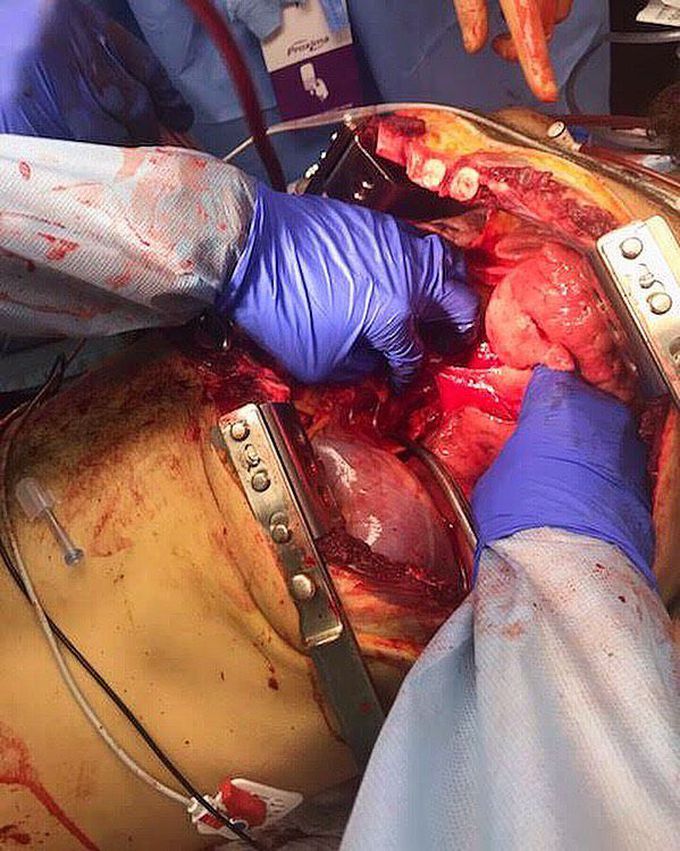


Thoracotomy with direct cardiac massage in an attempt to resuscitate!!
This is a young male who had multiple gunshots in his chest and abdomen. A decision was made for a bedside resuscitative thoracotomy. Access to the heart and lungs was obtained and the patient was found to have an injury from the gunshot to the IVC. The aorta was cross-clamped distal to the arch to redistribute the blood to the myocardium and the brain. The aorta is ideally clamped just above the diaphragm to maximize spinal cord perfusion, but the aorta can also be clamped just below the left pulmonary hilum. Pericardiotomy was carefully performed avoiding the phrenic nerve to check for any injuries or cardiac tamponade. Cardiac massage was performed as well. Thoracotomies are usually done as a last ditch effort in attempts to resuscitate the patient who is completely cardiac arrested. An incision is made on the left lateral chest, exposing the 4th and 5th ribs. The pectoralis muscles and intercostal muscles are cut and the ribs are retracted, exposing the heart. With the heart exposed, you are able to quickly suture up any lacerations of the heart and manually pump the heart (aka an open cardiac massage). Thoracotomies are considered last ditch efforts due to the fact that patients do not end up surviving, even with this aggressive intervention. Unfortunately, this patient did not end up surviving this trauma. The outcome of this procedure should not reflect the skill and hard work the entire team puts into this effort. You may know the gloomy outcome when going into this procedure, however, you have to have optimism that the patient you are working on may fall into the 1%, and pull through to have a thriving life! Photo by @relmanka
Amazing, and well done. How science, and surgeons have come so far is mind blowing. Maybe one-day we will see an increase in survival rates with this circumstance. Bravo team 👋
Thank you to the outstanding integrity and skills of the surgeon(s) and all the operating staff for desperately trying to save this young man.
Hemodynamic stimuli&nonhemodynamic stimuliEffects of sugar on teeth

